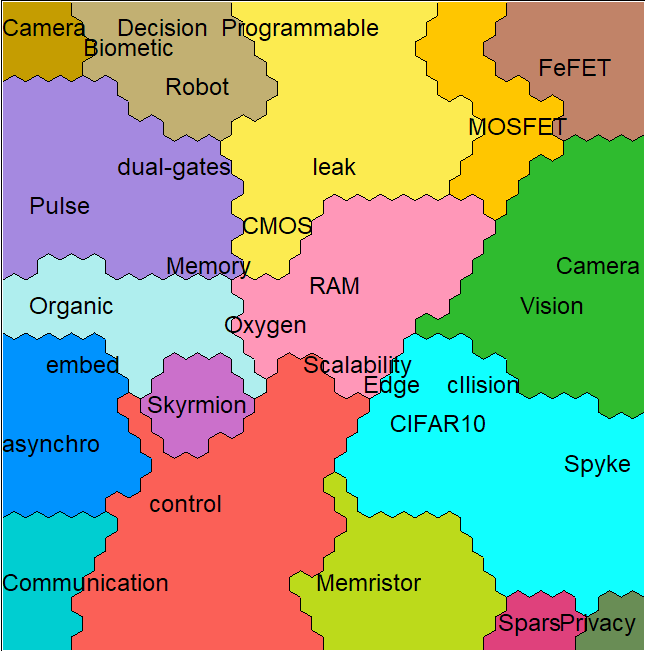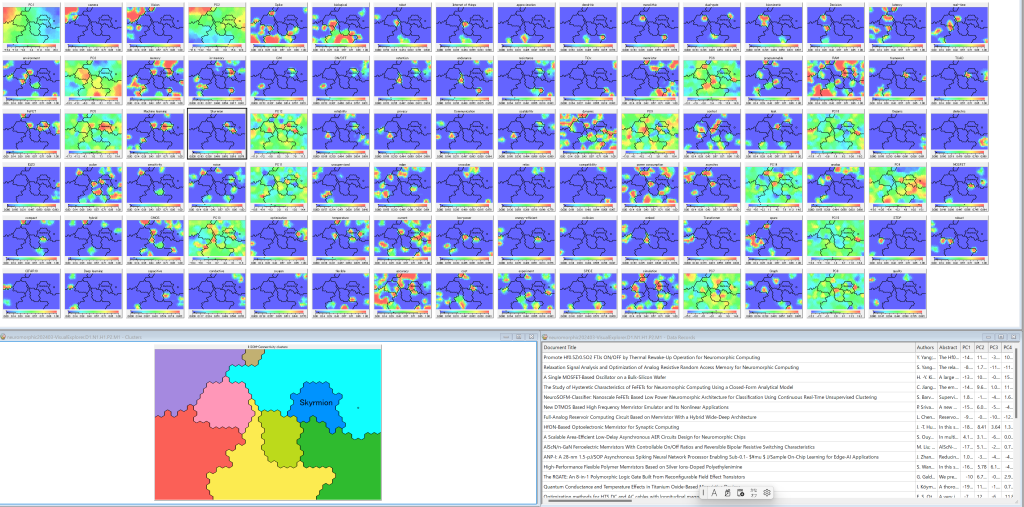Here is an Innovation Map on Neuromorphic computing which created from 118 abstracts from IEEE Xplore (https://ieeexplore.ieee.org/Xplore/home.jsp). We got Embedding vectors for each abstract using OpenAI API, and then reduced the dimensions using PCA. This SOM is ordered by 15 PC scores. The attribute for each term is associated at zero weight (priority) in order to observe the relations between each other.

You can display this map with free software module of Viscovery SOMine Visual Explorer. Please download English version from here (Windows 10 or higher required). Japanese version is here. And you can download the map file from here. However please note that underlying data mart is not included, so there is some limitation to explore and analyse it.
If you are interested in this map, you can become “paid E-mail member” of Mindware Innovation Maps, so that you have access to the project file including data mart, and “paid license member can access to full functionalities to mine data which unreduced dimensions. <read more…>
This map may not be of interest to many people because it deals with a technical subject. To give an idea of how to look at the map, for example, there are two articles related to “Skyrmion”, the vicinity of which one can assume has some similarity to these articles. We can take suggestions from the map in this way. Skyrmion is a vortex of magnetic fields generated by the spin of electrons; in other words, this represents the next generation of technology at the quantum level.
This map is ordered by the scores of the embedded vectors further reduced in dimensionality by PCA. That is, the values are standardized. This affects the topological order between points. We can change the ordering by changing the weights of each PC, with as little distortion to the data space as possible. This would correspond to changing the classification “until the scales fall from your eyes” in the KJ method. Concepts of things, or classifications, can change in many ways as perspectives change. It is the source of “creation” by humans.
